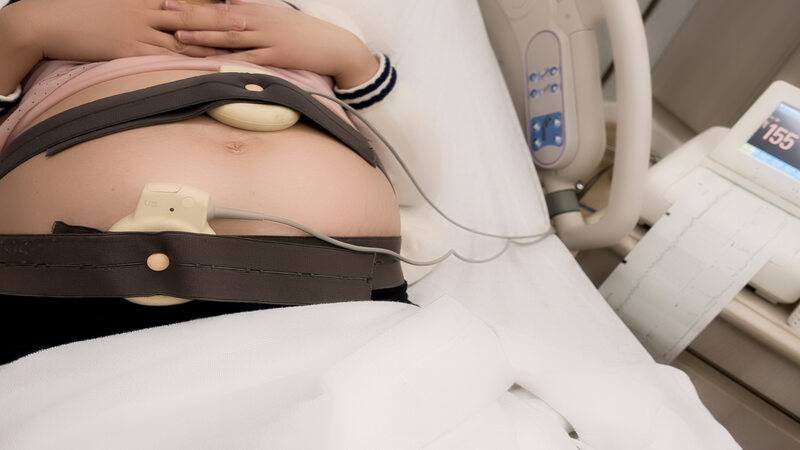 Obstetrics is all about the journey a mother takes for the safe well-being of her baby. The fetal biophysical profile is performed to assess the state of the fetus in utero for proper antenatal care in every trimester. BPP is done mainly in the third trimester to monitor the fetus and assess any associated problems. It can be sometimes associated with maternal comorbidities.
Obstetrics is all about the journey a mother takes for the safe well-being of her baby. The fetal biophysical profile is performed to assess the state of the fetus in utero for proper antenatal care in every trimester. BPP is done mainly in the third trimester to monitor the fetus and assess any associated problems. It can be sometimes associated with maternal comorbidities.
In this article, we have discussed in detail the advantages and disadvantages, why it is recommended, how to prepare for the test, and so on. This article will help you to understand better about the test and its importance in fetal well-being.
What Is A Fetal Biophysical Profile?
The term Biophysical profile was first introduced in Canada by Frank Manning in 1980 as a clinical tool for the prediction of fetal mortality and morbidity. It is used as a tool for detailed assessment of the behavioral state of the fetus in utero. In the beginning, the testing of BPP was limited to only one variable, i.e., fetal heart rate, but now it includes 5 variables. Due to recent advances, to avoid the disadvantages of BPP in 1989 Clark and coauthors introduced what is called Modified BPP (1).
What Does Biophysical Profile Score Mean?
BPP test result is scored from 0 to 10. The scoring system is given by Manning. the score of BPP depends on 5 parameters. The results signify that the fetus is in hypoxia or acidosis or not (2).
| Variables | Normal Score =2 | Abnormal Score =0 |
| Fetal breathing movements | >1 episode lasting >30 seconds | Absent or no episode in >30 seconds or minutes |
| Gross mody movements | 3 or more in 30 minutes | 2 or Less in 30 minutes |
| Fetal Muscle tone | >1 episode of active extension of limb; opening and closing of hand | slow extension; fetal movement absent |
| Fetal Heart Rate | 1 or more episodes in less than 30 minutes | Absent or less than>15beats/min in 20 minutes |
| Amniotic Fluid Volume | >1cm in two perpendicular planes | pockets absent or >1cm in two perpendicular planes |
- Score 10: The fetus is normal. If this is the result, then this test should be repeated every week.
- Score 8: There is a low risk of the fetus having asphyxia.
- Score 6: There is risk of chronic hypoxia. If the patient has a score of 6 at term then it would be better to deliver the patient. If the patient is not term then repeat the same on the same day if it comes less than 6 then delivery is the only treatment.
- Score 4: There is a high risk of fetuses having chronic hypoxia. If this is the score then delivery by cesarean section is the option.
- Score 0 to 2: This score is certain that the fetus is having severe asphyxia and delivery by cesarean is the ultimate option (3).
What Is A Good Biophysical Profile Score?
As already discussed earlier, BPP is interpreted by a scoring system. There are 5 parameters which are measured to interpret BPP and each parameter has a score of 2. A score of 8 to 10 is considered as normal BPP. The score between 0 to 6 is seen with suspicion and action is to be taken according to the score of BPP or repeat the test as advised by the obstetrician.
Why Is The Purpose of a Biophysical Profile During Pregnancy?

BPP is done on the principle that the fetal brain has certain centers that are very sensitive to hypoxia. These varying levels of hypoxia in the brain cause biophysical activities in the fetus. Because of the sensitivity of the fetal activities, this test is done to identify if the fetus is normal or suffering from hypoxia and acidosis.
The main idea of performing BPP is to decrease the stillbirth rates and for early detection of any hypoxia or acidosis in the fetus so that delivery can be done on time to avoid permanent neurological damage.(4)
How Do I Prepare For A BPP?
BPP testing doesn’t need any prior preparation since it is a non-invasive procedure. Only that mother should have a meal or light snacks before testing since some fetuses tend to be more active after the mother had a meal just before the test and it might give a good result in BPP. The mother should empty her bladder since it is a long procedure and it might be a little uncomfortable if the mother’s bladder is full.
How Is The Biophysical Profile Performed?

The method of performing BPP in as ways: (5),(6)
Ultrasound Examination
The BPP is measured mainly by ultrasound. The 4 parameters out of 5 are measured by ultrasound transducer or probe. The probe helps sound waves to convert into images that can be seen on the screen. With the help of ultrasound 4 variables of the BPP test can be measured, i.e., fetal breathing movements, fetal movements, fetal tone, and amniotic fluid volume. It can be time-consuming to measure BPP via ultrasound since it takes over a period of 30 to 60 minutes.
Non Stress Test( NST)
Non-Stress Test is performed to measure fetal heart rate by an electronic monitor which is attached to the mother’s abdomen. The patient is being laid down on an examination table, with the help of a belt, the transducer is attached to the mother’s abdomen which in turn record fetal heart rate.
The test is generally done for 20 minutes but if there is any abnormality noted or in any high-risk cases NST can be performed for up to 40 minutes. The normal fetal heart rate varies between 110 to 160 bpm. In a normal NST, there are 2 or more accelerations noted. If they are less than 2 then action should be taken accordingly.
Risks Of A Biophysical Profile

BPP should not be performed if there is history of administration of corticosteroids or magnesium sulfate within 48 to 96 hours. This can cause abnormal or decreased BPP.
Advantages And Disadvantages Of A Biophysical Profile:-

The assessment of BP on the fetus is a great tool for diagnosing hypoxia or acidosis in the fetus in utero but like all diagnostic tools, it also has some limitations.
Advantages:
Every procedure or test has some limitations, although it is being used in pregnant women after 32 weeks since it gives us information about the fetus in utero.
- It shows good predictive value.
- It rarely shows abnormal if the Doppler studies in the fetus are normal.
Disadvantages
These are lists of disadvantages of BPP which are as follows: (7)
- The method of performing BPP is a labor-intensive time time-consuming procedure because it requires 30 to 60 minutes to perform.
- There is a high false positive rate in BPP procedures.
BPP is a good predictive test for determining any hypoxia or acidosis developing in a fetus after 32 weeks of gestation. If there are any abnormalities, consultation with your health care professional is needed before taking any major decision regarding the continuation or termination of pregnancy and how to monitor the pregnancy in the future.
FAQ’s
1. How Long Does A Biophysical Profile Take?
The biophysical profile can have a minimum of 30 minutes and a maximum of 60 minutes. One of the variables of BPP is a non-stress test which is performed for 20 minutes. If the test results are abnormal then it can be prolonged till 40 minutes.
2. What Are The 5 Parameters Of Biophysical Profile?
5 variables determine the normality and abnormality of the BPP which in turn determines the next plan of action for the fetus. They are fetal breathing movements, fetal movements, fetal tone, amniotic fluid volume, NST
3. What Is The Fetal Age Biophysical Profile?
BPP is performed after the fetal gestation of 32 weeks. The BPP measured before 32 weeks might not be accurate and is not reliable since it can give more false positive values.
4. How Long Does It Take To Get Your Results?
BPP is performed in a minimum of 30 minutes to a maximum duration of 60 minutes. The nonstress test is performed for about 20 minutes, if any abnormalities are noted then it may extend until 40 minutes. The report is available on the spot. So, after performing the test parents can get the report within 10 minutes of performing it.
References
- Manning F. A. (1985). Assessment of fetal condition and risk: analysis of single and combined biophysical variable monitoring – https://pubmed.ncbi.nlm.nih.gov/3904008/
- Manning, F. A., Lange, I. R., Morrison, I., & Harman, C. R. (1984). Fetal biophysical profile score and the nonstress test – https://pubmed.ncbi.nlm.nih.gov/6379529/
- Manning F. A. (2002). Fetal biophysical profile: a critical appraisal. Clinical obstetrics and gynecology – https://pubmed.ncbi.nlm.nih.gov/12438875/
- Walkinshaw, Stephen, Cameron, Helen, MacPhail, Sheila and Robson, Stephen. “The prediction of fetal compromise and acidosis by biophysical profile scoring in the small for gestational age fetus – https://www.degruyter.com/document/doi/10.1515/jpme.1992.20.3.227/html
- Cleveland Clinic, Biophysical Profile – https://my.clevelandclinic.org/health/
- American Pregnancy Association. Biophysical Profile – https://americanpregnancy.org/prenatal-testing
- Oyelese, Y., & Vintzileos, A. M. (2011). The uses and limitations of the fetal biophysical profile. Clinics in perinatology – https://pubmed.ncbi.nlm.nih.gov/21353089/
